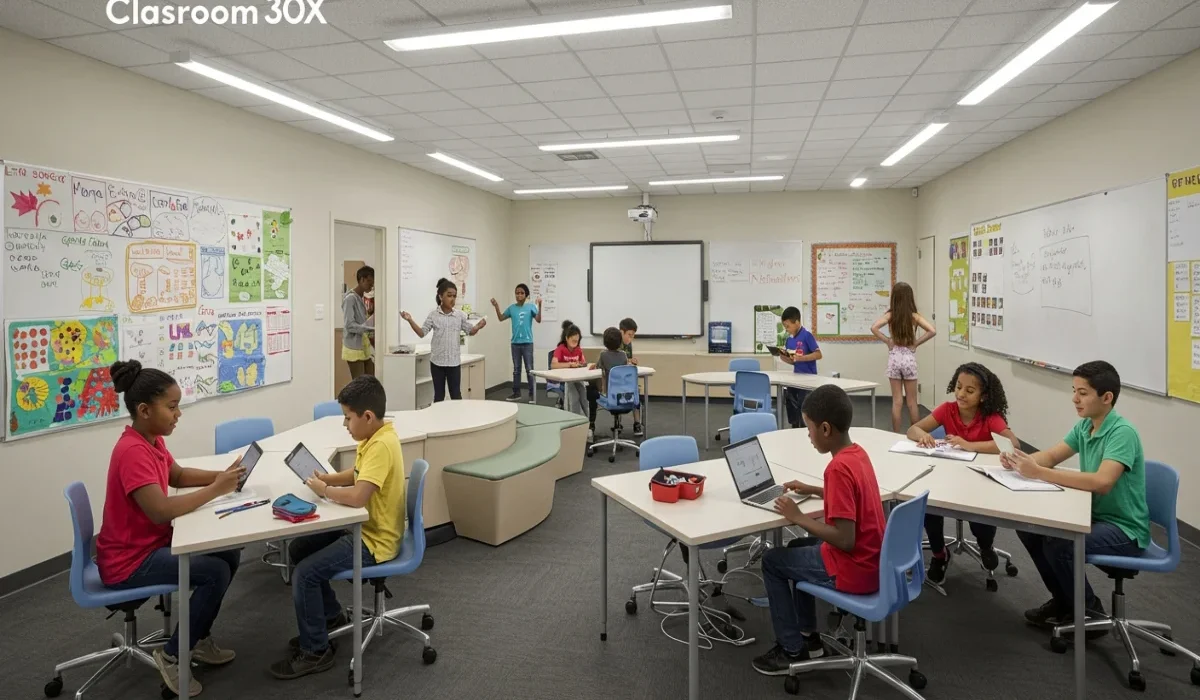Understanding Classroom 30x: The Future of Modern Education

Education is evolving rapidly, and so are classrooms. The concept of “Classroom 30x“ is gaining popularity in modern academic circles, as it represents a leap forward in how learning environments are designed, structured, and optimized. But what exactly is Classroom 30x? How is it different from traditional classrooms? And why is it being considered the future of education?
Let’s break it down.
What is Classroom 30x?
Classroom 30x is not just a room filled with 30 students. It’s a symbolic term used to represent a tech-enabled, student-centered learning environment that focuses on interaction, creativity, and personalized education. The “30” often refers to the typical number of students in a modern class, while “x” signifies a multiplication of possibilities — digital tools, hybrid learning, AI integration, and collaborative methods.
Think of it as a next-generation classroom model, where traditional chalkboards are replaced by interactive smartboards, textbooks are enhanced by tablets, and teaching becomes a two-way communication rather than one-way lectures.
Key Features of a Classroom 30x Setup
-
Technology Integration
Classrooms are equipped with smartboards, tablets, high-speed internet, and education software. Students can interact with content in real time, submit assignments digitally, and even attend virtual field trips. -
Collaborative Learning Spaces
The seating arrangement is flexible, allowing group work, pair learning, and round-table discussions. Students are encouraged to share ideas, solve problems together, and give peer feedback. -
Personalized Learning Paths
Using AI tools and learning analytics, teachers can identify students’ strengths and weaknesses. This allows for customized lesson plans, helping every student learn at their own pace. -
Interactive Teaching
Rather than just lectures, teachers use multimedia tools, quizzes, polls, and games to keep the class engaged. Students are active participants, not just passive listeners. -
Focus on Soft Skills
Communication, teamwork, leadership, and creativity are encouraged through projects, presentations, and real-life problem-solving tasks.
Benefits of Classroom 30x
-
Higher Student Engagement
Students are more likely to stay focused when they’re using tools they enjoy — like tablets and educational apps. -
Better Learning Outcomes
With personalized attention and a variety of teaching methods, students understand concepts faster and retain information longer. -
Global Connectivity
Students can connect with other classrooms around the world, collaborate on projects, and gain a global perspective. -
Teacher Efficiency
Technology helps teachers track attendance, performance, grading, and feedback — all in one place. This reduces manual work and increases productivity.
Classroom 30x vs Traditional Classroom
| Feature | Traditional Classroom | Classroom 30x |
|---|---|---|
| Teaching Style | One-way lectures | Interactive & student-led |
| Tools | Chalkboard, books | Smartboards, tablets, apps |
| Student Role | Passive listeners | Active participants |
| Learning Style | One-size-fits-all | Personalized and flexible |
| Focus | Exams and grades | Skills, creativity, learning journey |
Challenges in Implementing Classroom 30x
While the Classroom 30x model is promising, it comes with a few challenges:
-
Cost and Accessibility: Not every school can afford smart tools and infrastructure. Bridging the digital divide is essential.
-
Teacher Training: Educators need to be trained to use technology effectively.
-
Student Distraction: Devices can also become distractions if not monitored properly.
Conclusion
Classroom 30x is more than a modern classroom — it’s a vision for the future of education. By combining the power of technology with a student-focused approach, it opens up limitless opportunities for learning and growth. While challenges remain, the benefits of Classroom 30x make it a model worth striving for in schools around the globe.










